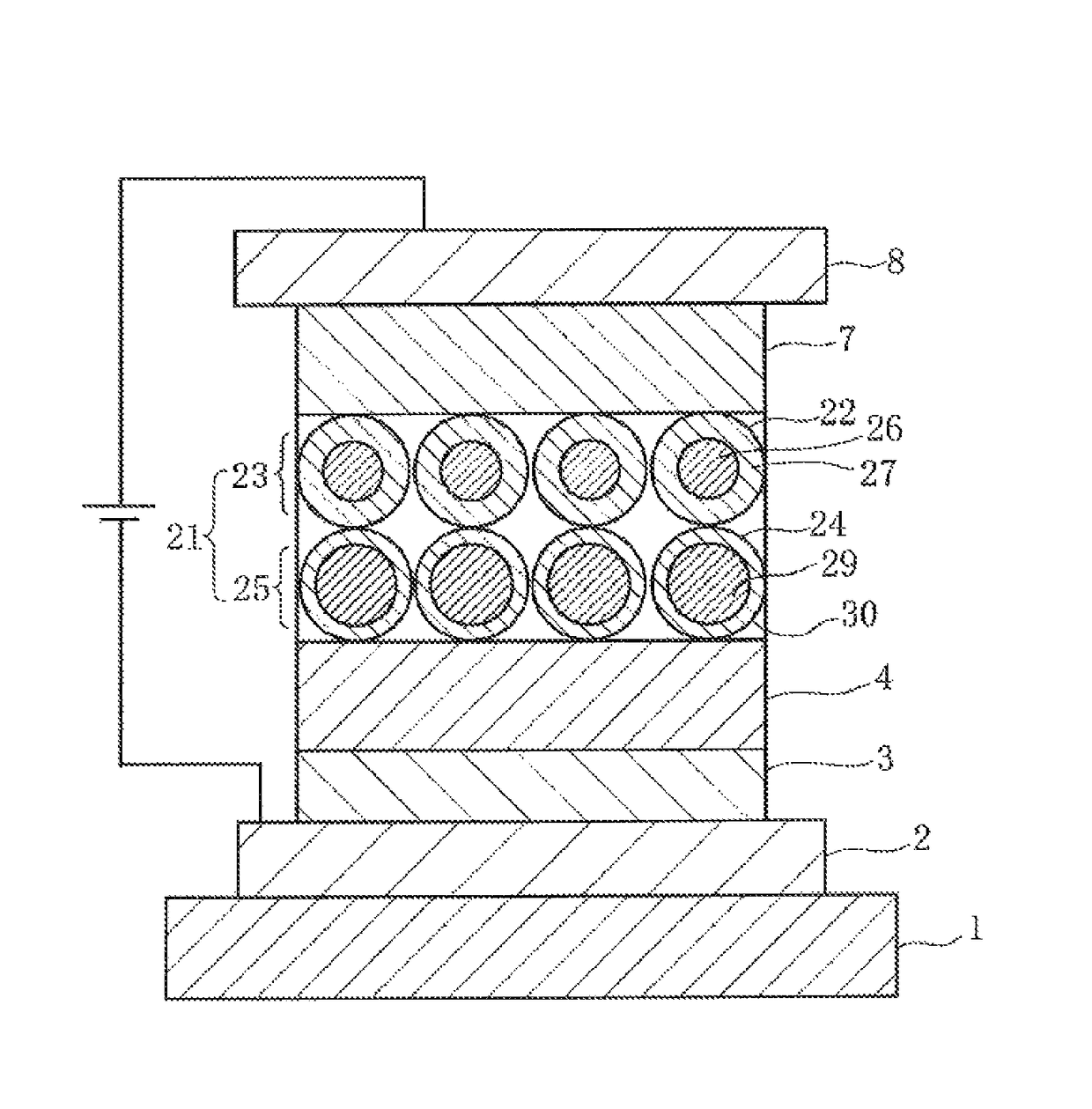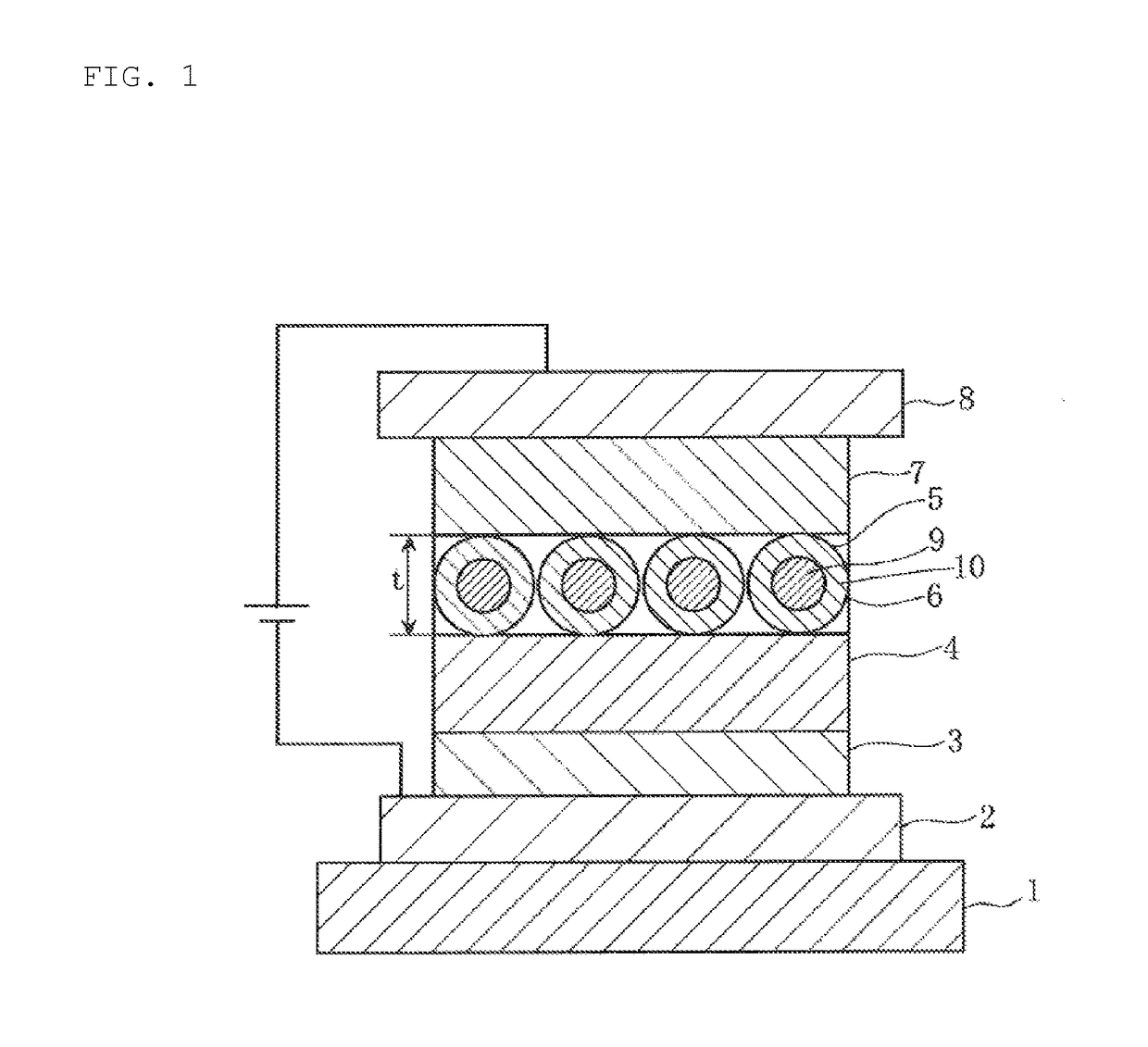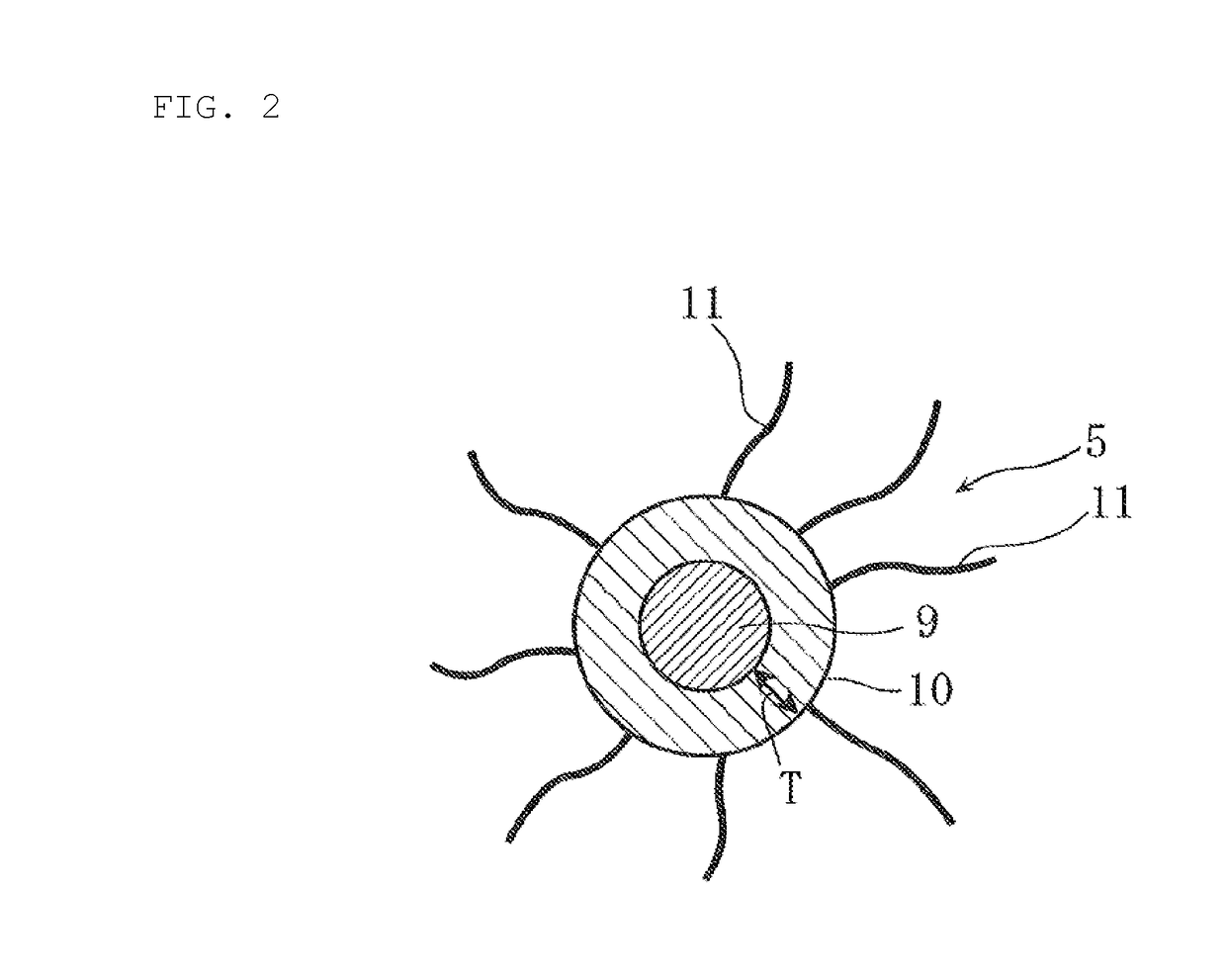Nanoparticle material and light-emitting device
a technology of nanoparticles and light-emitting devices, which is applied in the direction of organic semiconductor devices, selenium/tellurium compunds, luminescent compositions, etc., can solve the problems of poor recombination probability of carriers, poor performance of confining carriers, poor performance of confining carriers, etc., to improve the tunneling transport properties of carriers, improve the effect of hole block function and low drive voltag
- Summary
- Abstract
- Description
- Claims
- Application Information
AI Technical Summary
Benefits of technology
Problems solved by technology
Method used
Image
Examples
first embodiment
[0082]FIG. 1 is a cross-sectional view schematically illustrating a first embodiment of an EL element as a light-emitting device according to the present invention, where a light-emitting layer is formed from a nanoparticle material according to the present invention.
[0083]That is, this EL element has an anode 2 formed on a transparent substrate 1 such as a glass substrate, a hole injection layer 3 and a hole transport layer 4 composed of hole transporting materials sequentially formed on the surface of the anode 2, and a light-emitting layer 6 with a thickness t formed on the surface of the hole transport layer 4. In addition, an electron transport layer 7 composed of an electron transporting material is formed on the surface of the light-emitting layer 6, and a cathode 8 is formed on the surface of the electron transport layer 7.
[0084]Then, in the light-emitting layer 6, quantum dots 5 that is a nanoparticle material according to the present invention are aligned in a matrix.
[0085...
second embodiment
[0140]FIG. 6 is a cross-sectional view schematically illustrating a second embodiment of an EL element as a light-emitting device according to the present invention.
[0141]This EL element has a stacked structure where a light-emitting layer 21 has a first light-emitting layer 23 formed from first quantum dots 22 and a second light-emitting layer 25 formed from second quantum dots 24 that are smaller in shell part thickness than the first quantum dots 22.
[0142]The first quantum dot 22 has, specifically as illustrated in FIG. 7, the same form as in the first embodiment, and a shell part 27 is formed on the surface of a core part 26, while the surface of the shell part 27 is coated with a surfactant 28, and the thickness T of the shell part 27 is 3 to 5 ML on the basis of the constituent molecule of the shell part 27.
[0143]In addition, the second quantum dot 24 has, as illustrated in FIG. 8, a core-shell structure composed of a core part 29 and a shell part 30 coating the core part 29, ...
example 1
Preparation of Sample
[0163](Sample Number 1)
[0164](Preparation of Quantum Dot Dispersing Solution)
[0165]A quantum dot dispersing solution composed of a core part of CdSe (LUMO level: 4.4 eV, HOMO level: 6.5 eV) and a shell part of ZnS (LUMO level: 3.9 eV, HOMO level: 7.4 eV) was prepared.
[0166]That is, a cadmium oxide and a stearic acid were weighed to provide the cadmium oxide: 1.6 mmol and the stearic acid: 6.4 mmol. Then, the cadmium oxide and the stearic acid were put into a round-bottom flask with octadecene: 16 mL retained therein, and mixed in the octadecene. Then, this mixture was stirred with a stirring bar for 30 minutes while being heated to 100° C. under reduced pressure, further stirred with a stirring bar for 1 hour while being heated to 200° C. under a nitrogen atmosphere, and cooled to room temperature. Thereafter, to this solution, TOPO: 4 g and octadecylamine: 12 g were added, and the solution was again stirred with a stirring bar for 30 minutes while being heated ...
PUM
| Property | Measurement | Unit |
|---|---|---|
| particle size | aaaaa | aaaaa |
| thickness | aaaaa | aaaaa |
| temperature | aaaaa | aaaaa |
Abstract
Description
Claims
Application Information
 Login to View More
Login to View More - R&D
- Intellectual Property
- Life Sciences
- Materials
- Tech Scout
- Unparalleled Data Quality
- Higher Quality Content
- 60% Fewer Hallucinations
Browse by: Latest US Patents, China's latest patents, Technical Efficacy Thesaurus, Application Domain, Technology Topic, Popular Technical Reports.
© 2025 PatSnap. All rights reserved.Legal|Privacy policy|Modern Slavery Act Transparency Statement|Sitemap|About US| Contact US: help@patsnap.com



